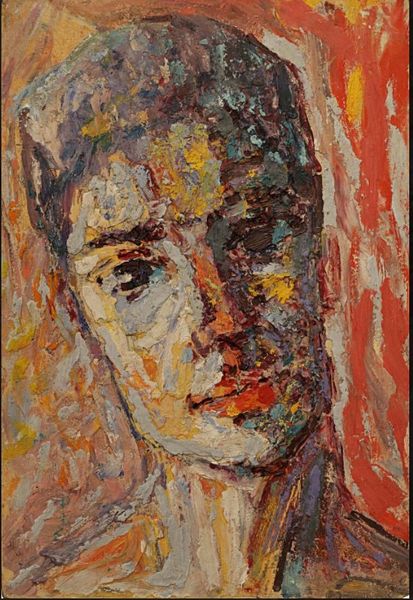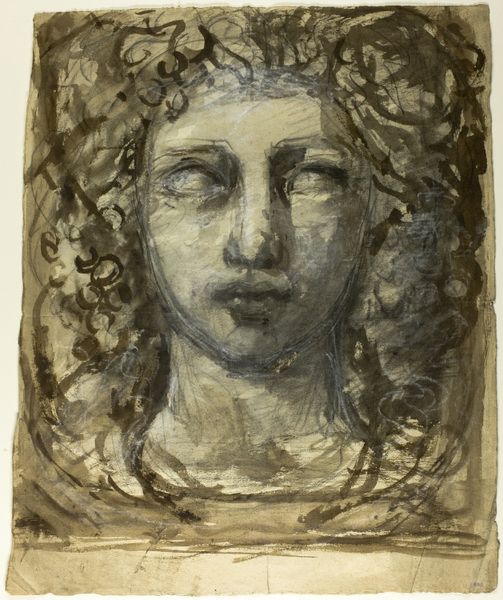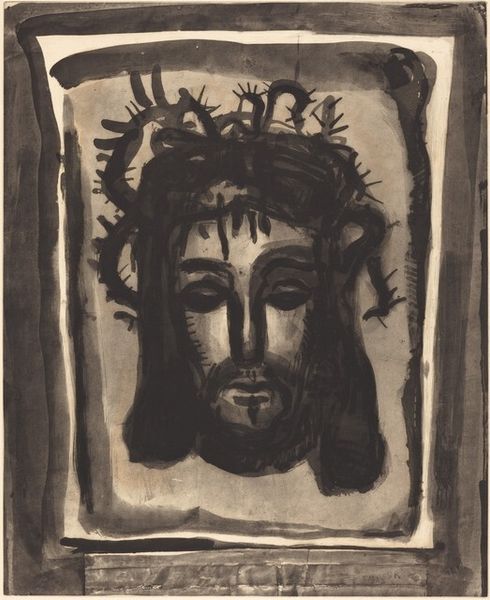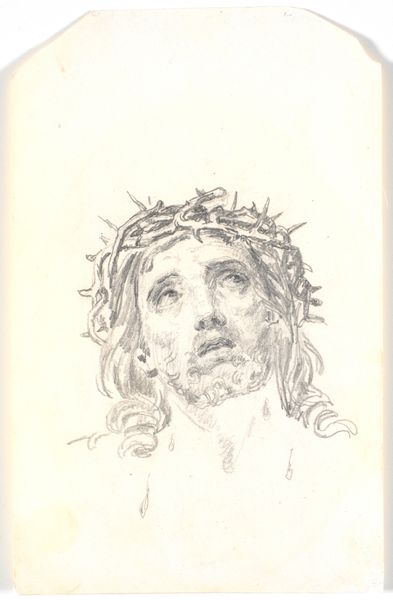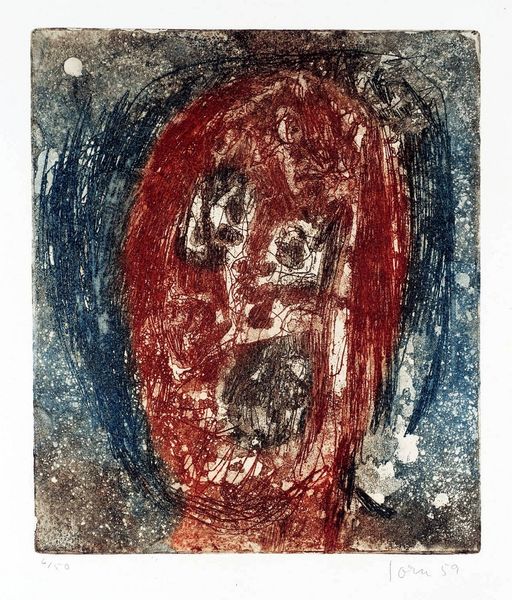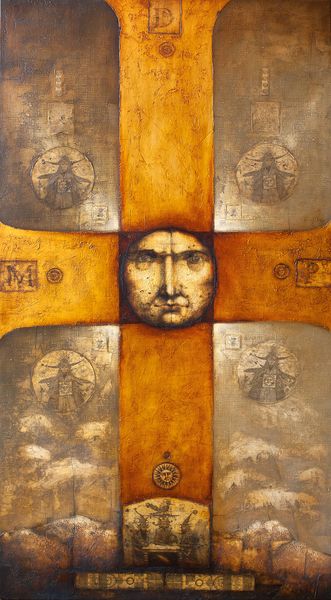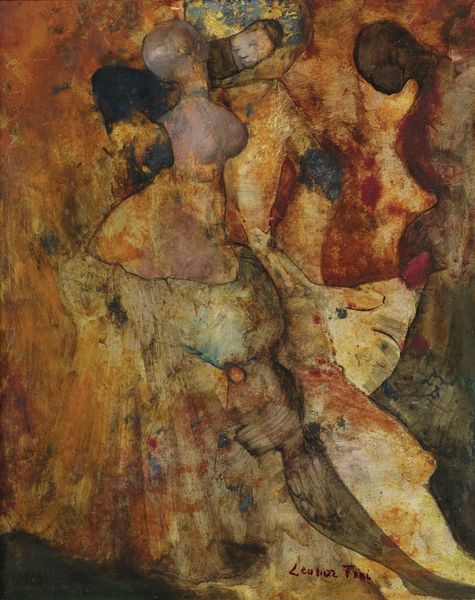
Dimensions: support: 348 x 252 mm
Copyright: © Tate | CC-BY-NC-ND 4.0 DEED, Photo: Tate
Curator: This is Cecil Collins' drawing, "Head," currently residing in the Tate Collections. Editor: The spattering effect gives it a somewhat ethereal, almost dreamlike quality. Curator: Collins' works often engage with themes of innocence and spirituality. This head might be seen within a longer tradition of idealised human forms. Editor: And those materials--ink and watercolour on paper--speak to accessibility. Was Collins making a statement about art production itself? Curator: His art definitely positioned itself outside mainstream movements. He sought a deeper connection, and saw art’s role as that of cultural and spiritual enrichment. Editor: Right, the material’s humbleness plays against any elitism, placing emphasis on the act of creation rather than the spectacle. Curator: Collins’ vision certainly pushed boundaries. Editor: It makes you reconsider what we value materially and culturally.
Comments
Join the conversation
Join millions of artists and users on Artera today and experience the ultimate creative platform.
tate 6 months ago
⋮
Collins pursued his vision of a lost paradise, destroyed by the mechanisation of the modern world, throughout his lifetime. Creating his own version of archetypal figures, such as the Fool and the Angel, he attempted to reveal to us our innermost selves. These figures, he believed, represented an innocence that had ceased to exist in the ‘Machine Age’ (Keeble, p.73). Many of Collins’s aims and beliefs were published in an essay he titled The Vision of the Fool which was first published in 1947. Throughout the essay Collins compares the Fool with the ‘Saint, the artist, the Poet’ (Keeble, p.81). He explains, ‘modern society has succeeded very well in rendering poetic imagination, Art, and Religion, the three magical representatives of life, an heresy; and the living symbol of that heresy is the Fool. The Fool is the poetic imagination of life, as inexplicable as the essence of life itself’ (Keeble, p.73).
